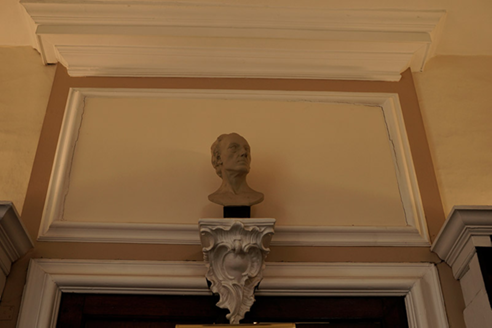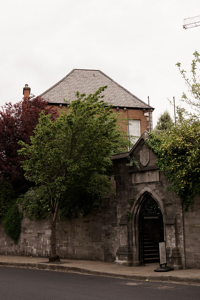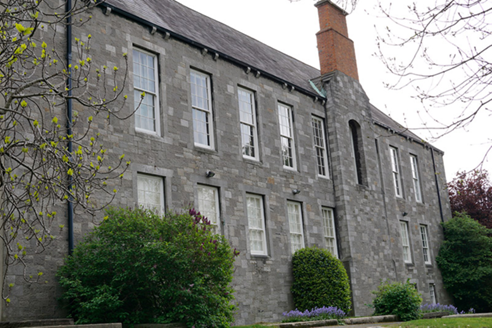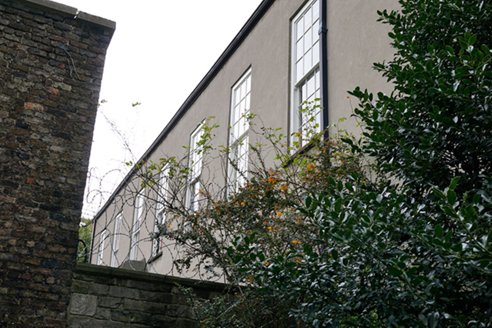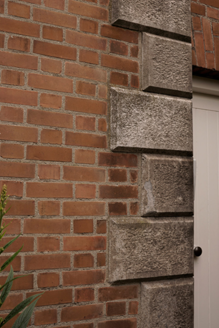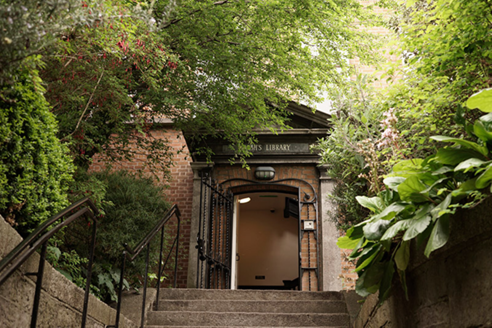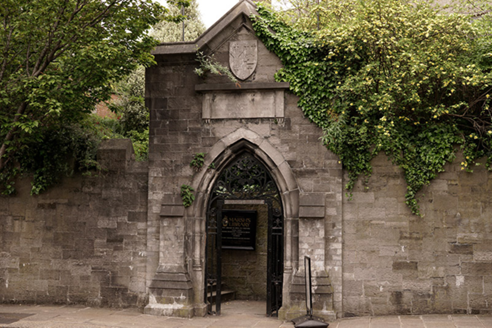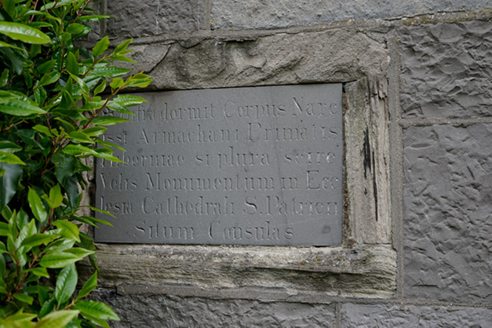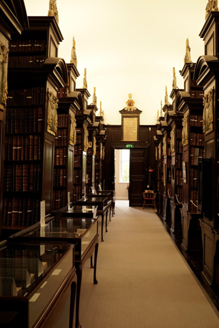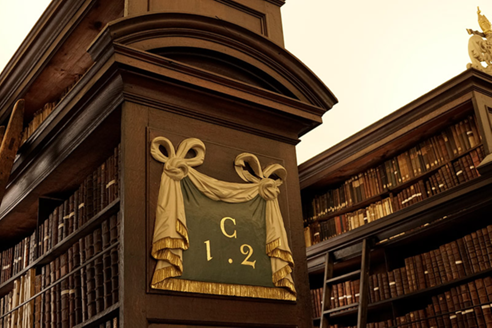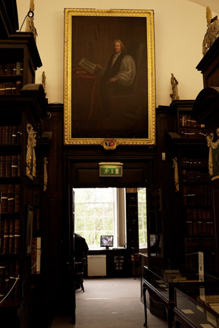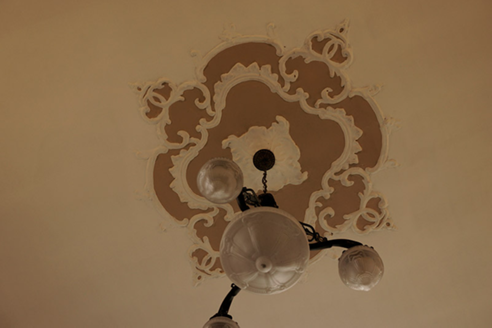Survey Data
Reg No
50110023
Rating
National
Categories of Special Interest
Architectural, Artistic, Cultural, Historical, Social, Technical
Previous Name
Library of St. Sepulchre
Original Use
Library/archive
In Use As
Library/archive
Date
1700 - 1705
Coordinates
315245, 233475
Date Recorded
27/04/2017
Date Updated
--/--/--
Description
Detached U-plan library, built 1701-3, extended 1710 and with new entrance added 1863. Raised two-storey four-bay entrance front with single-bay single-storey porch. Nine-bay three-storey return to south attached to eight-bay two-storey north block having three-bay two-storey projection. Hipped and pitched slate roof with cut limestone eaves brackets and cast-iron rainwater goods. Flat roof to porch having carved limestone parapet and eaves course. Red brick and limestone chimneystack with terracotta pot. Red brick, laid in Flemish bond, to entrance front, having cut limestone quoins, snecked tooled limestone walls to return with limestone plinth course, and smooth rendered walls to rear. Cast-iron decorative vent covers. Limestone pilasters to porch, supporting carved pediment over nameplate with brass lettering. Square-headed window openings having limestone sills with nine-over-nine pane and eight-over-eight pane timber sliding sash windows, some having wrought-iron railings. Square-headed door opening with timber panelled door having wrought-iron security gate. Oak floors and book-stacks to two galleries to interior, one with barrel-vaulted ceiling. Oak panelled stack ends having foliate and mitre and stole finial details, segmental timber pediments with plaques to stacks with painted and gilded swag cartouches having painted lettering. Decorative ceiling rose to librarians' room at junction of two galleries. Plaster panelled walls, with painted console brackets to cornice level having foliate detail supporting carved marble busts. Snecked limestone boundary wall to south of site, having crenellated parapet with square-plan piers with pointed caps and fleur-de-lis finials. Pointed-arch pedestrian entrance having pediment, stepped limestone buttresses, shield plaque and tooled limestone plaque with Latin inscription, carved limestone surround and wrought-iron gate and surround. Flight of granite steps with wrought-iron handrail. Set overlooking graveyard of St. Patrick's Cathedral with some grave markers to walls.
Appraisal
This building forms an unassuming, though highly significant part of the complex of buildings associated with St. Patrick's Cathedral. Marsh's library is the oldest public access library in Ireland and is of major significance as being one of a very small number of eighteenth-century buildings still in its original use. Set around a courtyard that incorporates part of the medieval archiepiscopal complex of St. Sepulchre, it has warm brick elevations to the entrance front and facing into the central garden. The variety of windows and their treatment adds visual interest. The porch is a later, but fitting principal access point. The library's interior, modelled on the Bodleian Library, Oxford, is remarkably intact. The original oak book stacks with fine decorative embellishments retains contents that are of considerable significance in themselves. Other features of the interior, such as plaques, busts, paintings, plasterwork and timber panelling and floors, add considerably to the architectural and artistic importance of the building. When Narcissus Marsh took up his position as Church of Ireland Bishop of Dublin in 1700, he observed that the bishop's palace had no library and he commissioned William Robinson to design the present building. Marsh, a former Provost of Trinity College, wanted to create a library which, unlike that of Trinity, would be open to the public. Many of the collections in the library are still kept on the shelves allocated to them by Marsh and Elias Bouhéreau, the first librarian. Over the centuries, the building has been associated with famous individuals, including Jonathon Swift and Bishop Barkley. Its scale and setting are impressive and its siting, adjacent to both the grounds of St. Patrick's Cathedral and the medieval archbishop's palace, makes it part of a complex of significant early ecclesiastical buildings.
